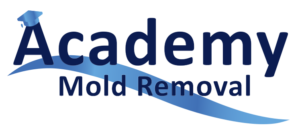How to Remove Mold from Bathroom Ceiling: Step-by-Step Guide for a Cleaner Home
September 21, 2024Expert Tips on How to Remove Mold from Bathroom Ceiling Effectively
September 21, 2024Mold on bathroom ceilings is not only unsightly but can also pose health risks, especially for those with respiratory issues. The good news is that there are simple and effective ways to remove mold safely without the need for professional help. In this article, we’ll cover how to remove mold from bathroom ceiling using safe methods that anyone can follow.
Why Mold Grows on Bathroom Ceilings
Bathrooms are prone to mold growth due to the high humidity levels created by showers and baths. When moisture doesn’t have a chance to escape, it can settle on surfaces like ceilings, leading to mold formation. Lack of ventilation is a major contributor, making it essential to address both the mold itself and the environmental factors that promote its growth.
Method 1: White Vinegar Solution
One of the simplest and safest ways to remove mold is by using white vinegar, a natural antifungal agent. Here’s how to remove mold from bathroom ceiling using this method:
What You’ll Need:
- White vinegar
- Spray bottle
- Scrub brush or sponge
- Protective gear (mask, gloves)
Steps:
- Fill a spray bottle with undiluted white vinegar.
- Spray the vinegar directly onto the moldy areas of the ceiling.
- Let the vinegar sit for about an hour to fully penetrate the mold.
- After an hour, use a scrub brush or sponge to gently scrub the mold off the ceiling.
- Rinse the area with water and dry it thoroughly with a clean cloth.
Method 2: Baking Soda and Water Paste
Another non-toxic method is using a baking soda paste. Baking soda is a natural deodorizer and cleaning agent that’s safe for use around children and pets.
What You’ll Need:
- Baking soda
- Water
- Scrub brush
- Spray bottle
Steps:
- Mix baking soda with water to form a paste.
- Apply the paste to the moldy spots on your bathroom ceiling using a sponge or brush.
- Let the paste sit for 10-15 minutes.
- Scrub the ceiling gently with a brush, ensuring all mold is removed.
- Rinse the area with water and wipe it dry.
By using baking soda, not only will you remove the mold, but you’ll also help prevent it from returning, as baking soda leaves behind a protective layer that discourages mold growth.
Method 3: Hydrogen Peroxide Spray
Hydrogen peroxide is a powerful antifungal and antibacterial agent that can effectively tackle mold without releasing harmful fumes.
What You’ll Need:
- 3% hydrogen peroxide solution
- Spray bottle
- Scrub brush
Steps:
- Pour hydrogen peroxide into a spray bottle without diluting it.
- Spray the affected ceiling area generously with hydrogen peroxide.
- Let it sit for 10 minutes to allow the peroxide to kill the mold.
- Scrub the area with a brush to remove the mold.
- Wipe the ceiling with a damp cloth and dry it completely.
This method is particularly effective for larger patches of mold and is safe to use on most bathroom surfaces.
Preventing Mold from Coming Back
Now that you’ve learned how to remove mold from bathroom ceiling, it’s essential to prevent it from reappearing. Here are some simple tips:
- Improve ventilation by installing an exhaust fan or opening windows during and after showers.
- Use a dehumidifier to reduce moisture levels in the bathroom.
- Clean and dry surfaces regularly to prevent moisture buildup.
- Apply mold-resistant paint to your bathroom ceiling to provide an additional layer of protection.
Conclusion
Mold in the bathroom is a common issue, but with these simple methods, you can safely eliminate it without resorting to harsh chemicals. Whether you opt for vinegar, baking soda, or hydrogen peroxide, each of these solutions will help you effectively tackle the problem. By following these steps on how to remove mold from bathroom ceiling, you’ll not only remove the mold but also ensure it doesn’t come back.
